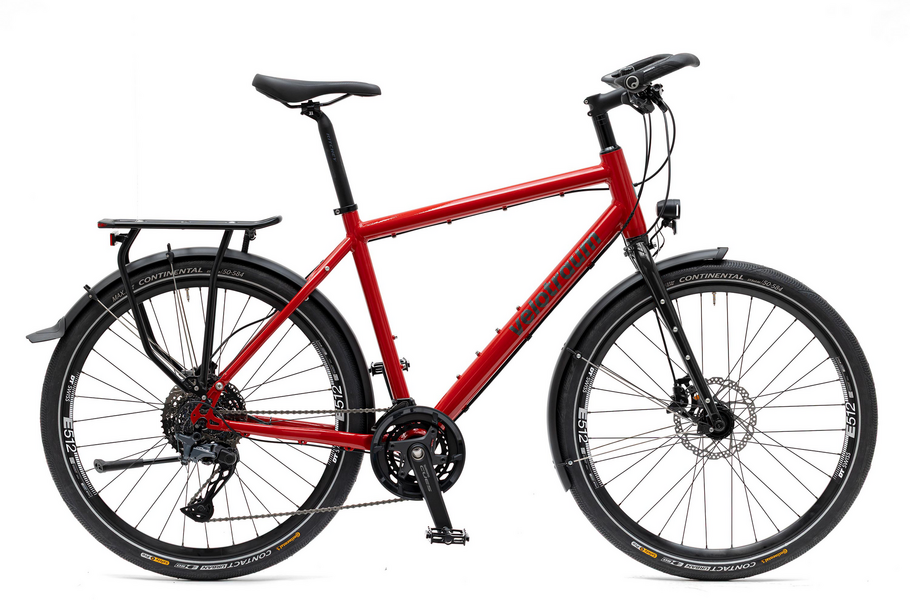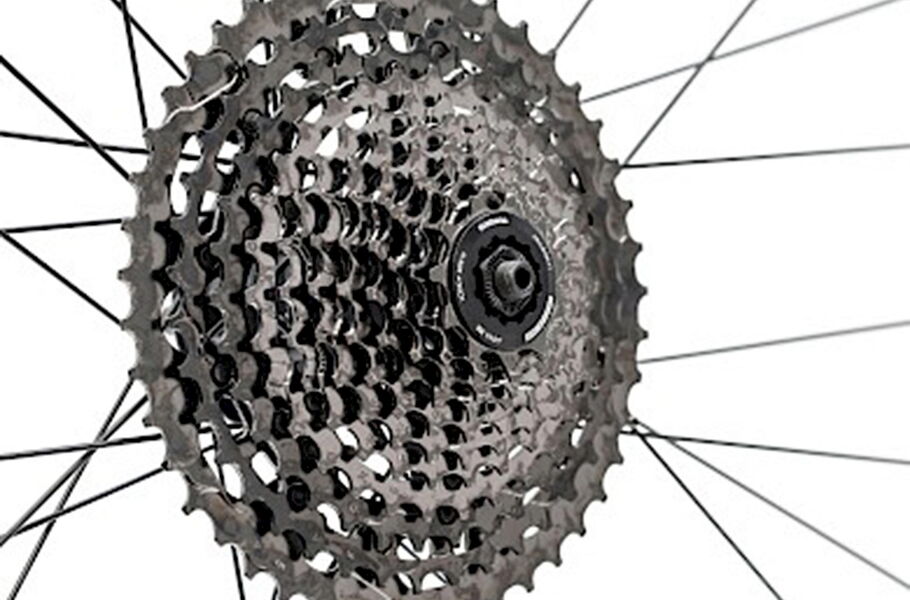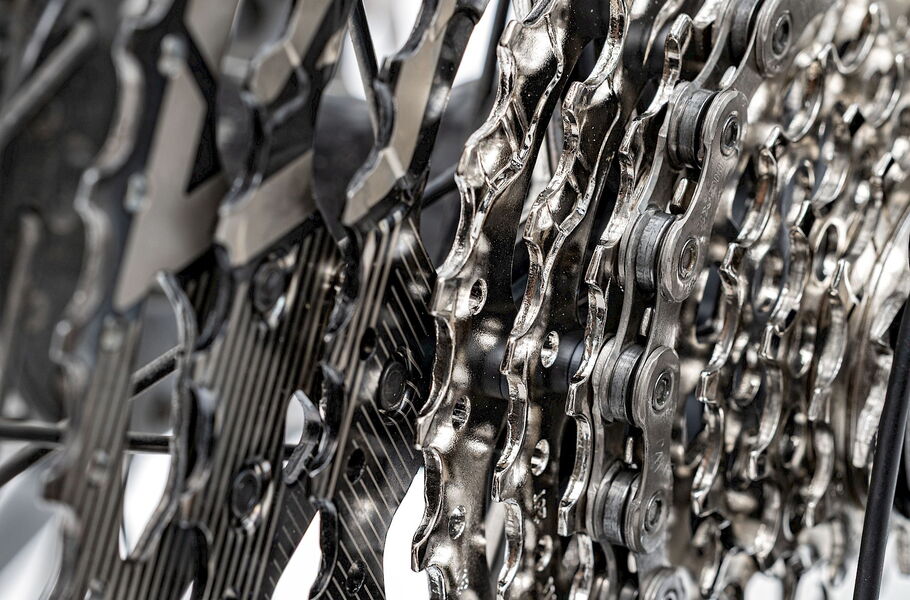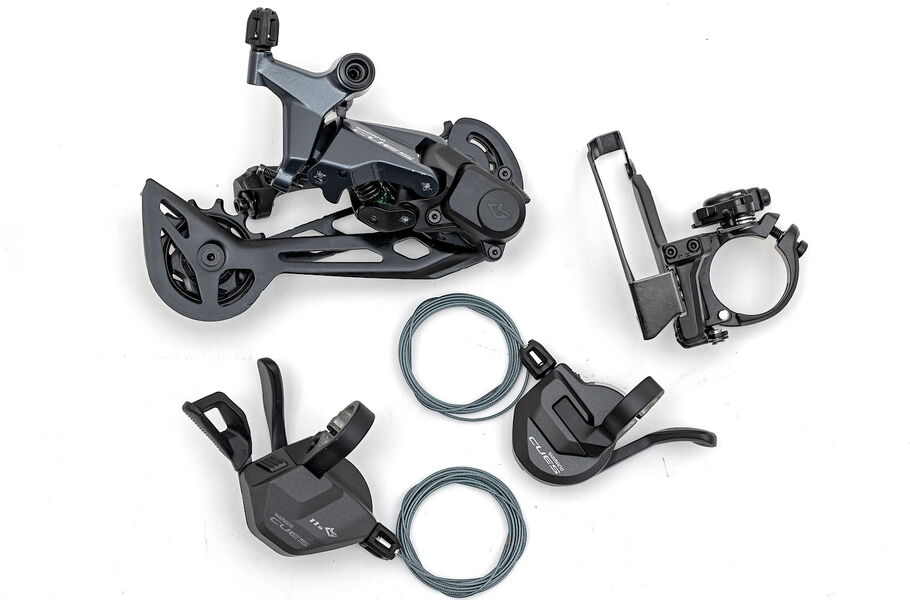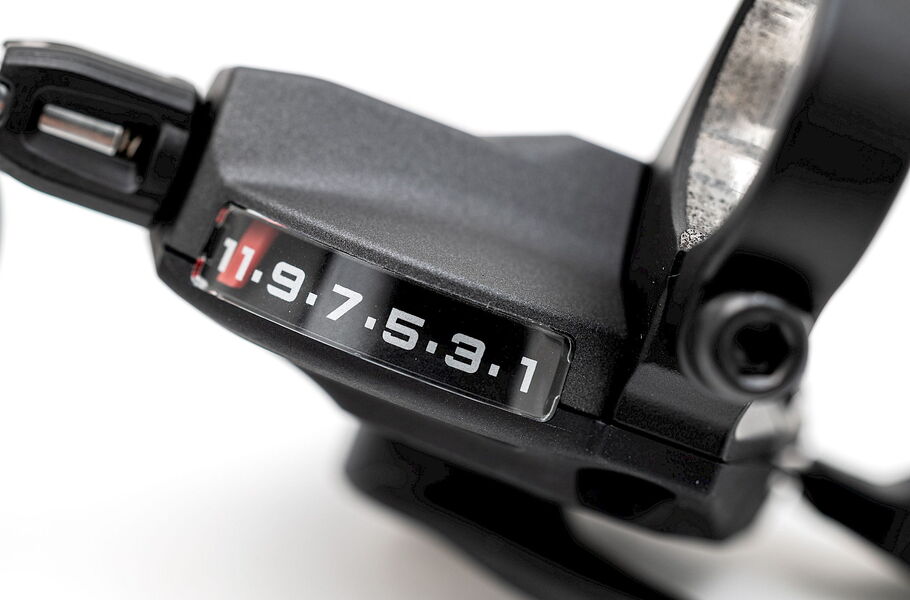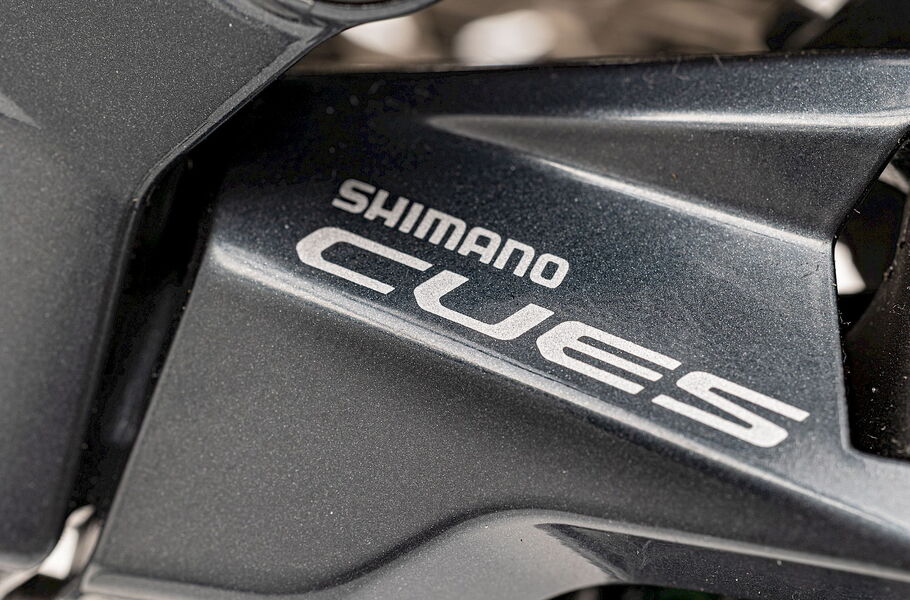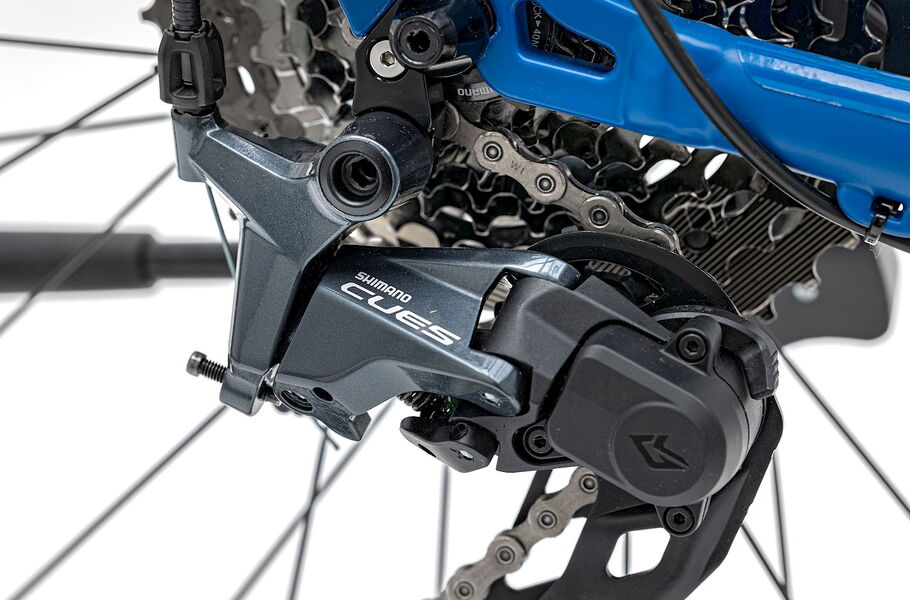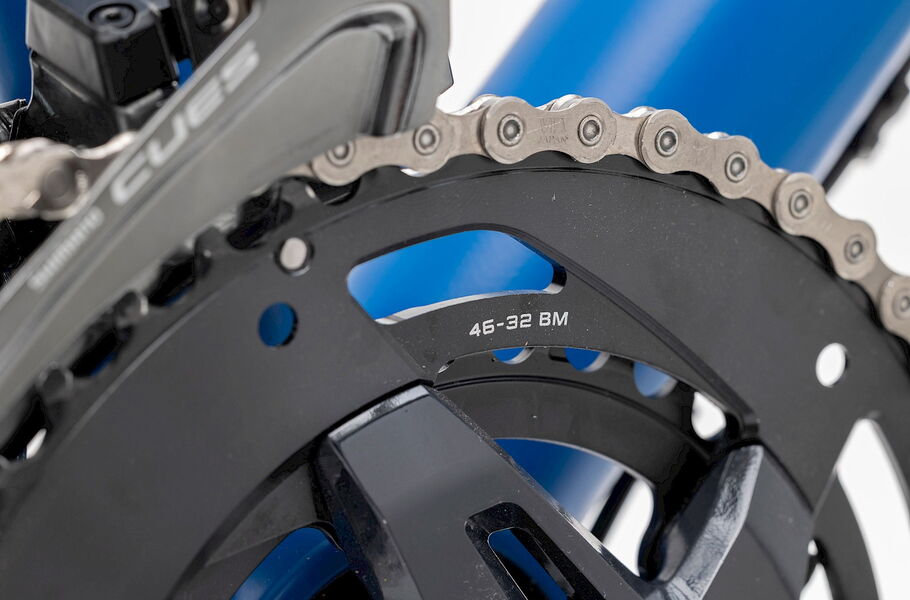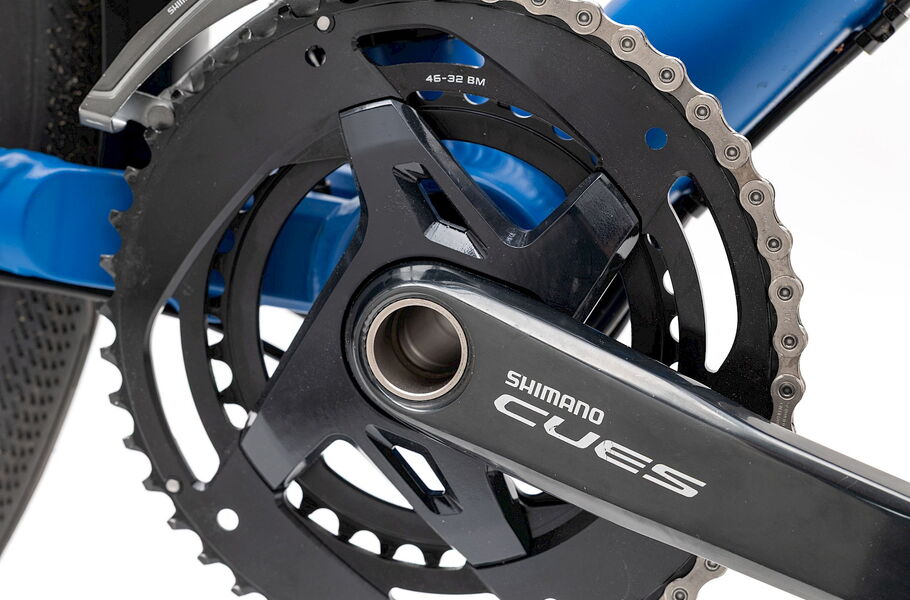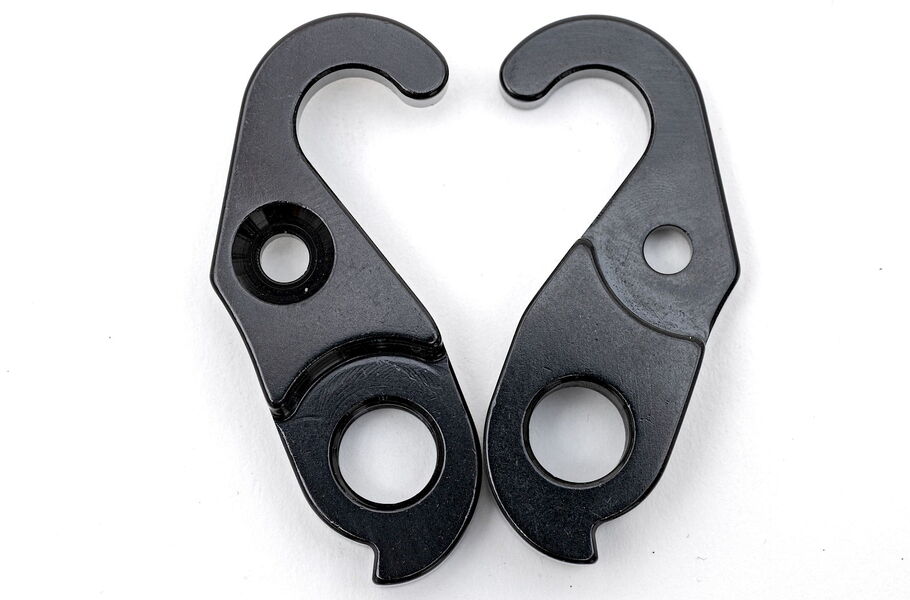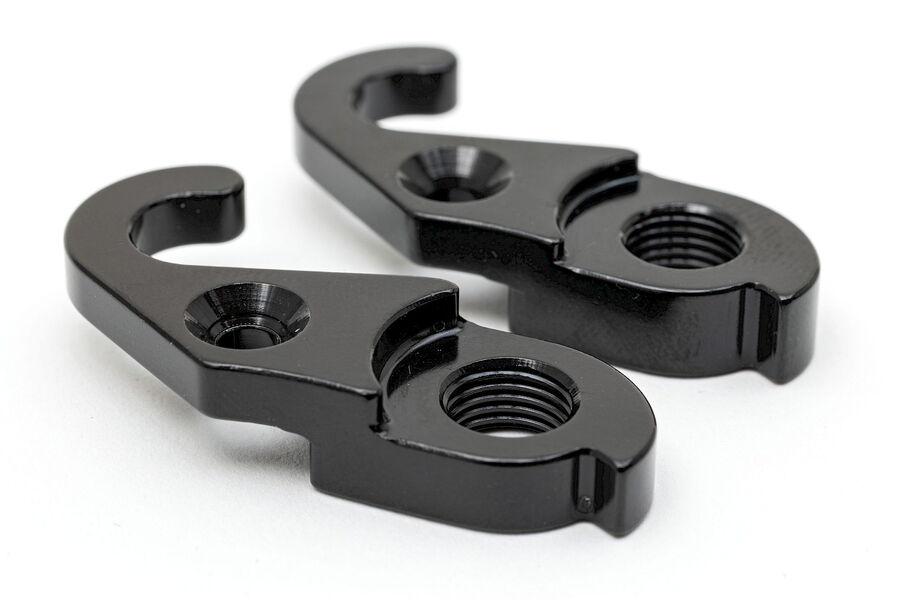"Why only now?" some might ask. "There was something there before," loyal velotraum fans will say.
"All’s well that ends well," because we’ve invested a lot of brainpower to make the Shimano Cues group compatible with our bikes. Now, we’re offering the Cues 2×11-speed drivetrain as a standard option on the new PAVER P2 Edition and we also recommend this configuration for the ROOTER R2.
At Velotraum, we always find a solution—and the effort was worth it. We modified the frame to give the Cues derailleur enough space to operate without interference. That was the problem.
Why Shimano Cues fits the PAVER and ROOTER so well
The Shimano Cues group is ideal for everyday use and longer tours—exactly what both our models are built for.
The Linkglide cassette technology significantly improves chain smoothness and increases component durability, making the Cues a low-maintenance and worry-free drivetrain. The cassette teeth are more robust, new shifting aids ensure smoother gear changes, and wear is reduced.
This also makes shifting under load gentler—which is especially beneficial for e-bikes. On our ELEKTRIKER pedelec, depending on the configuration, Linkglide cassettes and other Cues components are also installed. With the Di2 version and the Shimano Steps EP801 motor, Autoshift and Freeshift are also possible.
Shimano emphasizes sustainability and compatibility: not only is there less wear, but components from the Cues 8000 (premium), 6000 (mid-range), and 4000 (entry-level) series can be mixed. Individual cogs are replaceable, and all cassettes in the series fit standard Shimano HG freehub bodies.
We also use a mix of component classes within Cues as well as Shimano group combinations to achieve the best possible compatibility for specific use cases.
For example, if a handlebar bag is used, we combine the Cues U8000 shifter with the Deore T6000 brake lever to avoid cable routing conflicts between the bag and the head tube—or cramped finger space—which would be an issue with a Cues 8000 brake lever.
So, the most expensive or newest component isn’t always the most suitable—it depends on the function. It's well known that performance differences between Shimano group levels are often marginal. However, the PAVER P2 Edition and optionally the ROOTER R2 uses a full premium 8000-series drivetrain, except for the crank, where we preferred the matte black look of the U6010. There was no compromise on the derailleur: it had to be the excellent U8020, because it features Shadow Plus—a switchable clutch that keeps the chain taut and prevents chain slap.
Since the Cues group replaces several former mid-range trekking groups in the Shimano lineup (Acera, Altus, Alivio, and even XT), it’s not just a simplification—it’s a small revolution from below. For the first time, Shimano didn’t introduce a paradigm shift in the road or high-performance sectors, but in the trekking, touring, and commuting categories.
What lasts long finally turns out well—that’s the story behind our Cues@Velotraum project.
What was the problem—and what did we do to make it work?
What doesn’t fit will be made to fit!
The R900 frame of the ROOTER was already modified during its redesign to accommodate the tighter tolerances required by the Cues group.
Afterwards, we filed down the derailleur hanger by 2 mm and repositioned the rack mounts. Now there are no more conflicts when removing the rear wheel—the derailleur no longer collides with the rack, which now sits slightly higher.
By the way, Cues stands for "Create Unique Experience."
With this new group on our PAVER P2 Edition and the ROOTER R2 we’ve taken the shifting experience—already excellent with previous groups like the XT—to the next level. Riding a velotraum bike has always been a "unique experience", but with the new Cues group, shifting is now even smoother and gentler on the material.



